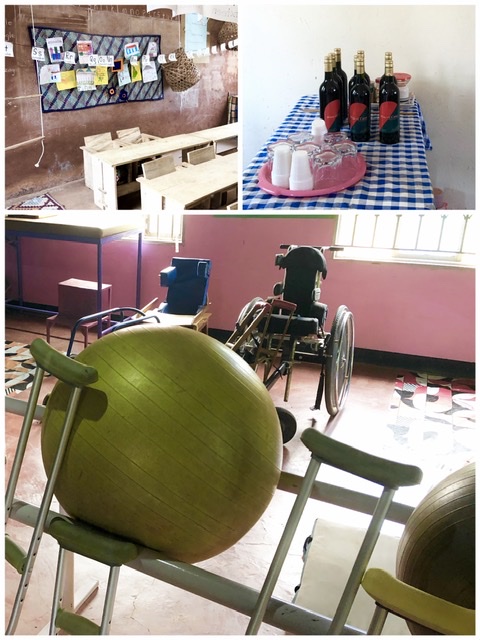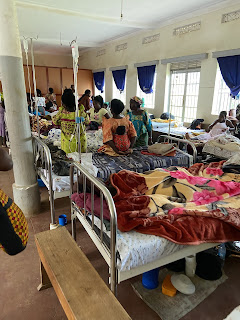Study Theme: Orphans and Vulnerable Children
Sophia, Chantal, and Gerald
We still have over a week let in Uganda and we can’t to
interview more locals and gain a better understanding of the issues faced by
orphans and vulnerable children.
Met with dancing, good food, and a wonderful cause, we were
so excited that the Training of Rural Women in Uganda (TORUWU) got to give us
our first official welcome into the country.
TORUWU stands up on three themes: education, health, and income generation. Their primary focus is to economically empowering rural women in Uganda by providing different skills training so as to be able to sustain their families and themselves. These economic activities like wine making, tailoring, craft work, mushroom growing, etc. help woman sustain their vulnerable children in aspects of health and education. TORUWU also has a primary school in their premises that serves about 400 children, and their main heath service is providing physical therapy for 35 community children with cerebral palsy and other disabilities. These children are identified through peer assessments of homes, but unfortunately, in Uganda disabled children are often seen as a curse and hidden from visitor’s sight. We also learned that men often run away when they initially find out that their child was born with a disability, placing the child with even more vulnerabilities as a key caregiver is now out of the picture and greater responsibility is being bared by the mother. While TORUWU is doing amazing work by providing free physiotherapy, it comes at a heavy cost to the organization, a factor that limits the number of sessions to only two per month.
After our travels to Rakai, an early wake-up call and 7am church service with our homestay families, Joseph Rutaraka invited us to visit the Rakai Orphans Hope Project (ROHP). As an orphan himself, Joseph felt called to help the orphans and vulnerable children (OVC) of Rakai, and after sharing his idea with his own Italy-based sponsor they together pursued the creation of ROHP. By providing child-sponsorship, skills training, and running a community school ROHP challenges assumptions, calls for involvement, and works for change. Joseph gave us so much valuable insight about orphans and vulnerable children in the context of HV/AIDS, a public health issue that has a fairly high prevalence in the Rakai district. Factors such as mother to child HIV transfer, AIDS related complications, minimal community mobilization, stigma, and adult mortality all play a role in exacerbating a child’s vulnerabilities. ROHP believes in the power of education, and through preventative HIV services, utilization of existing services, and a heart for the children, ROHP hopes to continuously improve the circumstances of OVC. The statistics show that 15% of children in Uganda are orphans, 6.2% of children have HIV, and that armed conflict, food insecurity, poor implementation of government policies, and poor child care all contribute to the creation of orphans and vulnerable children. However, after visiting the organizations we have so far we are humbled to get to know about their successes and achievements to work within the community.
Most recently, our focus group had the opportunity to speak
with Philip, the OVC Program Coordinator at the Rakai Health Sciences Program
(RHSP). The OVC Program at RHSP, which was founded in 2017, is a CDC and PEPFAR
funded program that strengthens households of OVCs through four domains:
health, safety, stability, and education. In order to graduate from the
program, households must meet several specific benchmarks in these four
categories. Additionally, the program makes sure to utilize a household-based
approach to ensure continual support to the OVCs. The target group for the 2019
fiscal year was 22,861 individuals, which includes both OVC and caregivers who
receive at least one service. The program had 101% performance, which Phillip
informed us could be a potential red flag as money and resources were being
stretched between an extra 300 individuals than anticipated, potentially
causing the quality of services to decrease. For a two year old program, the
OVC section of RHSP has done well in educating the Masaka Region about HIV and
enrolling HIV positive individuals in ART, however, they have yet to reach the
95-95-95% goal -- 95% of individuals should know their HIV status, 95% of HIV
positive individuals should be enrolled in antiretroviral therapy (ART), and 95%
of individuals in ART should be virally suppressed. In the next several years,
we would like to see how the program progresses and expands their support of HIV
positive and vulnerable children as they work towards an AIDS-free generation.






Comments
Post a Comment